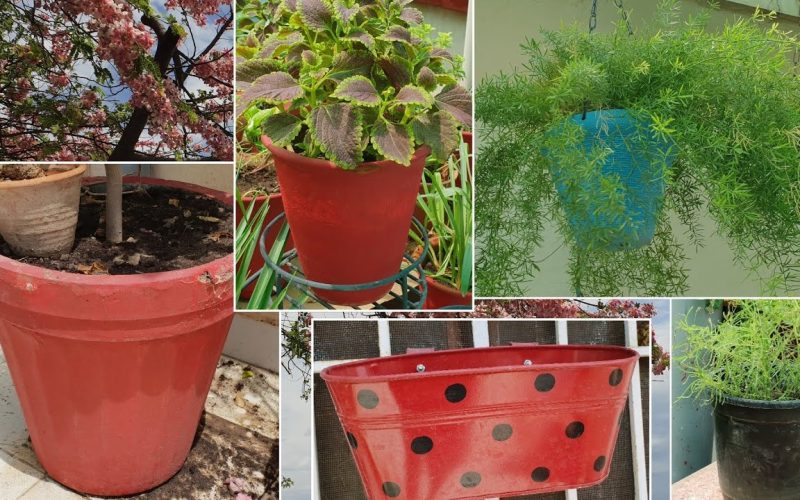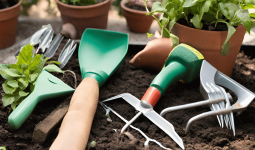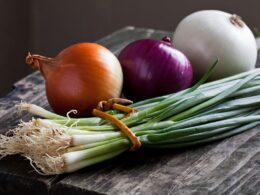Many people prefer plants as ornamental items to enrich their living spaces.
Greeneries are often believed to bring peace of mind, tranquility, and relaxation into one’s life.
Also, pots for plants are considered some of the most excellent pieces of décor one can have around.
Like most plant lovers, you may be confused about the different types of pots for plants or what types of pots are suitable for different plants.
Especially since there are many options in the market, you can find good, bad, and ugly-looking pots for plants.
Although you may plant flowers, vegetables, and succulents in various ways, it’s a mistake to believe you can use the same container for indoor, outdoor, big, or even hanging plants.
Any flora needs the appropriate container fit to have a healthy and long life.
If choosing suitable pots for your plants is an issue, you can choose from these different pots.
1. Plastic Pot
Let’s begin with the most prevalent and pretty affordable to purchase. As the name implies, plastic pots are made of plastic, the most popular and widely offered item in nurseries.
Plastic pots may grow flowers and other vegetation and are suitable for many plants.
These pots are best placed outside, preferably on balconies and verandahs.
Even though we are all aware of plastic’s disadvantages and negative consequences, it’s still widely used as nursery pots because it’s cheap and easy to maintain.
2. Coir
Coir pots are considered environmentally safe, biodegradable, and long-lasting compared to other types of pots for plants.
Coir pots are typically made from coconut husk, making them eco-friendly.
They also come in various forms and sizes to suit your taste and preference.
Flowers and garden plants are good choices for coir containers. Most people also choose to use these pots for indoor or terrace gardening.
3. Ceramic
Ceramic pots or stoneware are highly grained and constructed of light-colored clay.
They are often appealing since they are well-painted and ornamented with waterproof and paint-like material.
They are made by heating them in a hot kiln and then shaping them to achieve the desired finish, and they may be customized to any shape.
Plants that work well in ceramic pots and containers are grown inside. Whether it’s Aloe-Vera or a lovely fancy shrub, they’ll look fantastic in them.
Ceramic pots can ideally be placed on tables and as a decorative item.
4. Wood
Although not very popularly used as a pot for a plant, it can be very fancy and attractive.
Wood is a common and natural material that appeals to almost everyone.
Artists can readily convert any piece of wood into a decorative item, including a plant pot.
However, they decay quickly under unfavorable climatic conditions; thus, we should only use them indoors.
Small container plants usually look lovely in small wooden plant pots and are even more appealing when placed on tabletops and desktops.
5. Terracotta
This type of pot is similar to ceramic pottery but not entirely the same.
Terracotta is a type of pot for plants constructed of a particular type of watertight and permeable terracotta clay.
These pots are ideal for dry soil plants since they can immediately fix the issue of overwatering.
Among the different types of pots for plants, terracotta pots are excellent for preventing soil infections and root rot.
Plants that need dry soil, such as cactus or tulsi, are ideal for clay pots. Terracotta is excellent indoors, especially in charming corners of the house.
Also, terracotta could be used to garden dry soil plants in the open air.
6. Metal Pot
Metal pots are gorgeous and attractive and have become increasingly fashionable, mainly because of their brilliant and gleaming color.
Various metals can be used to make different types of pots for plants.
However, they are best kept indoors because they may heat up fast if left outside.
In particular, copper and brass metal pots are ideal for adding a touch of sophistication and modernity to our living spaces.
Any indoor plant would look good in copper and brass metal pots. The best spots to put a metal pot to make it stand out are in pretty nooks, close to walls and tabletops.
7. Baskets
A popular modern trend is hanging pots, such as baskets. Nowadays, baskets are often used in most homes, adding unique décor and originality to the interiors.
Begonias, tassel ferns, and other hanging plants grow well in these basket pots, perfect for balconies and verandahs.
Unique hanging plants might be an excellent solution for patios or porches that seem empty.
8. Concrete
Concrete containers are the way to go if you are looking for a highly sturdy, dependable, and long-lasting pot or if you like succulent plants.
Concrete pots are porous, allowing water to absorb or evaporate readily.
Alone, they make a beautiful decoration. Cactus and related varieties work well in concrete planters.
Among the different types of pots for plants, concrete pots are considered ideal for indoor use because they’re fantastic ornamental elements.
9. Stone Pot
Many of us are unfamiliar with stone posts simply because they aren’t readily available.
However, their new forms and colors are making them fashionable nowadays.
Stone pots make fantastic indoor ornamental pieces that are sturdy and long-lasting.
They are water-resistant and appropriate for tiny plants; bonsai plants are also suitable for stone pots.
It’s ideal for indoor and outdoor decorative plant containers but is best kept on shelves if used as an indoor decoration.
10. Recyclable and Sustainable Homemade Pot
When you can recycle, why buy? We often discard objects that appear useless, but with imagination, you can transform these materials into beautiful plant pots.
You can create different types of pots for plants using old kitchen pans and teapots.
Houseplants such as a Cactus or Aloe Vera would fit perfectly in an improvised teapot as a type of pot for plants.
Alternatively, you could build an outside planter out of painted tires. Emptied plastic bottles and containers might also be used.
These recyclable home DIY plant ideas might be your best buddy if you believe in sustainable living. All you need to do is be inventive and work hard.








